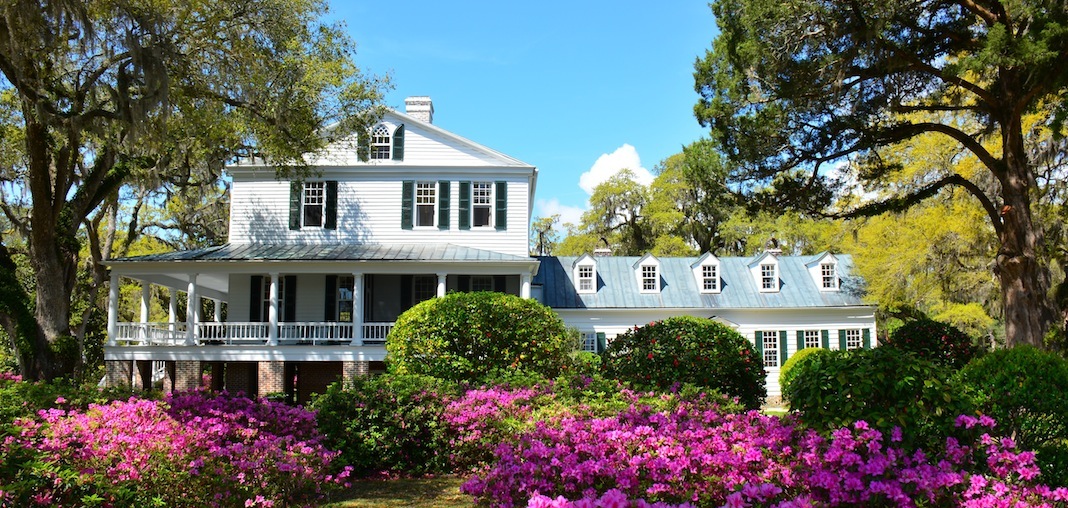Real estate is many things to many people. Where you raise your family. Where you park your money. Retire. This list goes on. To us more than anything else it’s a lifestyle.
You can think of this in purely literal terms of course. If you’re scared of sharks and love to ski, a chalet in Utah with a hot tub overlooking the high peaks would probably suit you. Some people hate to drive and couldn’t imagine life beyond the fifteen-block radius around their Tribeca loft a la Cary Bradshaw in Sex In The City.
There’s something bigger about real estate as lifestyle however. Where—and in what—you live defines you more singularly than any other physical thing in your life (i.e., more than your car, your clothes, etc.). It makes a statement about what you love. Which is probably why we love historic properties so much.
Real estate is also impossible to untwine from culture. You can import a lifestyle pretty much anywhere these days wherever you can buy a building lot. Case in point: some of the most extraordinary properties on our site are exacting historic replicas designed with extensive use of authentic reclaimed materials but recently constructed and not indigenous to the native architecture (i.e., a medieval-style French chateau in Scottsdale AZ—link to).
When you encounter a truly authentic, however, historic lifestyle property there’s no mistaking it. Because nothing’s forced and everything fits just right. Including you.
1) Chicora Wood Plantation (Georgetown, SC)
Whatever words you try to use to describe a classic Southern plantation estate will fall short. Part of the challenge is just the sheet order of magnitude. When you have 1000 acres of property, a mile of riverfront, eight outbuildings including a school house, 10,000 square feet of interior space, and ten bedrooms it’s difficult not to write a book.
Then there’s the history itself. Most of the great iconic Southern plantations that are still intact have direct connections to the Civil War and long links to American politics and industry. Many were at one point, or still are, owned by four generations or more of the same family. Some are still working rice farms almost three-hundred years later.
There are few better examples of this richness of history and the embodiment of the modern plantation lifestyle than Chicora Wood, the original residence of former South Carolina Governor Robert F. Allston. We’re talking seersuckers and mint juleps after a day of quail hunting here. Ancient, twisted oaks draped with Spanish moss surround the classic antebellum manor house along a mile of lazy Low Country riverfront. During the current owners’ recent renovation no expense was spared to maintain the original period details and plantation-era design while adding every modern comfort and luxury.
The Governor’s daughter, Elizabeth Allston Pringle, was the last rice planter of Chicora Wood, “surviving in a man’s world and in a society in upheaval”. Ms. Pringle is still known today for her contributions to women’s literature as the author of “A Woman Rice Planter”, her early account of a being a woman entrepreneur in the Old Boys club.
Over a hundred years later, one could easily imagine a modern day Ms. Pringle pacing the covered front porch of Chicora Wood smart phone in hand having the same conversation with her corporate public relations team.
2) Dove Island (Branford, CT)
This is an obvious one for me since I lived in Key West for five years. Few types of real estate say lifestyle like ‘private island’. No matter what the phrase conjures up in your mind—your own deepwater dock, pool parties, the smell of sunscreen, Jimmy Buffet—there’s nothing like being surrounded by water on all sides.
Dove Island stands at the southern end of the 1 + acre private island amid Connecticut’s Thimble Islands (23 of which are uninhabited) and has been exquisitely renovated to preserve the original character while providing every modern luxury imaginable (which especially appreciated when you don’t have a driveway to make a quick five minute run into town).
The grounds are park-like and the Zen-like pool is heated and surrounded by lush foliage and lawns that maintain privacy while maximizing the surrounding water and distant island views. The wrap around porch and the hot tub that’s built into the rocks encompass uninterrupted views of the surrounding islands, sunsets, and the historic village of Stony Creek.
But the best part about the private island lifestyle for us is the knowing that no one will know anything about you. Because you own the whole island. Even the most gregarious and chatty among us (my wife would be included in that category) need a retreat from life and people occasionally. Some of us (that would be me) literally prefer islands without people altogether.
Hurricane? Not to worry. Turn up the Jimmy Buffet and start stirring the dark and stormies. This baby’s fully wired with on-site solar and gas as well as back-up generators.
3) The Ulliakana Inn (Bar Harbor, ME)
If you asked us what we’d want to do if we could start life all over again it would probably go something like this: mimosas and omelettes in the morning overlooking the water, whale watching after lunch, tea and a charcuterie plate every afternoon at 4:00, and make sure there’s port out before bed. It’s never too early to start thinking about a career change, and we’re in full agreement with the thousands of other people like us who dream about running a bed and breakfast. When you think about the alternatives what’s so bad about living year round where everyone else goes on vacation? So we couldn’t write a Friday Top Five about historic lifestyle properties without including this quintessential America dream.
As far as classic bed and breakfast vacations go it doesn’t get much more authentic than Bar Harbor, Maine. And it doesn’t get much more historic than The Ullikana Inn built in 1885. Secluded, romantic, downtown, and steps from the water, Ullikana is a dream job gift wrapped in vintage Tudor lines in Maine’s ‘down east’ summer vacation mecca of Mount Desert Island which has been attracting visitors and summer residents from around the world for more than a century.
In the late 19th century, the grand homes on Maine’s coast like Ullikana built by wealthy East Coast industry pioneers were cheekily referred to as ‘cottages’—maybe compared to the owners’ other homes in Newport. Today, Ullikana’s original architecture which was specifically designed for weekend guests and entertaining lends itself perfectly to a bed and breakfast. The classic, private gardens are surrounded by water and mountain views, and all of the rooms have private en-suite bathrooms (many also have private fireplaces, terraces, and water views). The expansive entertaining spaces on the first floor including the outdoor terrace overlooking the boats on Frenchmen’s Bay ensure that your guests have something to do when there’s nothing to do.
Is that the definition of a dream job?
4) 15 Hubert Street (Tribeca, New York City)
People have been living ‘downtown’ and walking everywhere for millennia. But every fashion eventually comes back and is hip again. Living the modern, walkable, urban lifestyle is now a cultural statement that millions of Millennials are making (as well as the businesses that follow them). The waves of neighborhood revitalization that have accompanied them are controversial to some, but astonishing no matter your view. If you asked the people who have lived in Detroit, Philadelphia, Baltimore, New York City, Washington DC, and dozens of other cities for decades that are currently undergoing massive downtown gentrification, I’m pretty sure that they would have bet against you.
When it comes to Manhattan, I know a ton of people who have lived there for at least some period of their lives. I know a few people who grew up there and have never left. With the rare exception of an Uber car to the Hamptons their entire world unfolds within the radius of fifteen city blocks (talk about a private island). Yes, it is possible.
And herein lies the essence of a property like 15 Hubert Street, one of the last historic loft conversions in one of the most historic areas of Tribeca which puts you spot down in the middle of the universe if you live in Manhattan. Tucked back on a 150-year old cobblestone street and consisting of just twelve exclusive residences, there is no purer epitome of the walkable, historic lifestyle. The inspiration for the design of the penthouses in particular began with a commitment to retain the authenticity and openness of the original spaces and preserve the building’s industrial roots. When you throw in a gourmet chef’s kitchen, spa bathroom, and custom modern finishes throughout why would you need to travel more than fifteen blocks in the first place?
5) Mid-Century Modern (Seattle, WA)
There aren’t many native forms of American architecture that are generally universally celebrated with the notable except of mid-century design. In many ways mid-century architects were decades ahead of their time—floor to ceiling windows, bright light, open flow, and indoor/outdoor living connecting the inhabitants with their surroundings while maintaining privacy are all on the absolute must-have list for any modern developer. And all those developers successfully selling the modern Millennial lifestyle can’t be wrong.
Now take that bright and open mid-century design, give it 270-degree water and volcano views, and you have the Lionel Pries home, the last project designed by this well-known Pacific Northwest architect and located at the tip of Seattle’s exclusive Webster Point. The best part about this historic mid-century home is what hasn’t been changed, so much of the original Pries’ design elements, like the central wood paneled kitchen and built-in stereo system, remain perfectly preserved in their 1965 glory. Other classical mid-century details include the grand breezeway, vaulted ceilings, terrazzo floors, multiple terraces, and panoramic views of Lake Washington and Mount Rainier.
Cue the eight track and fire up the Delorean. We’re headed back to the sixties.

